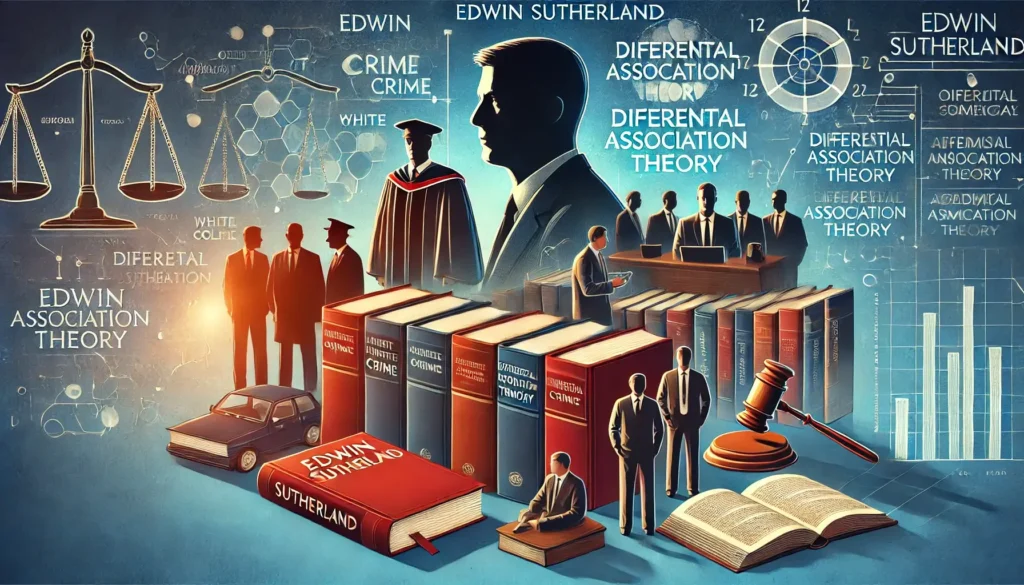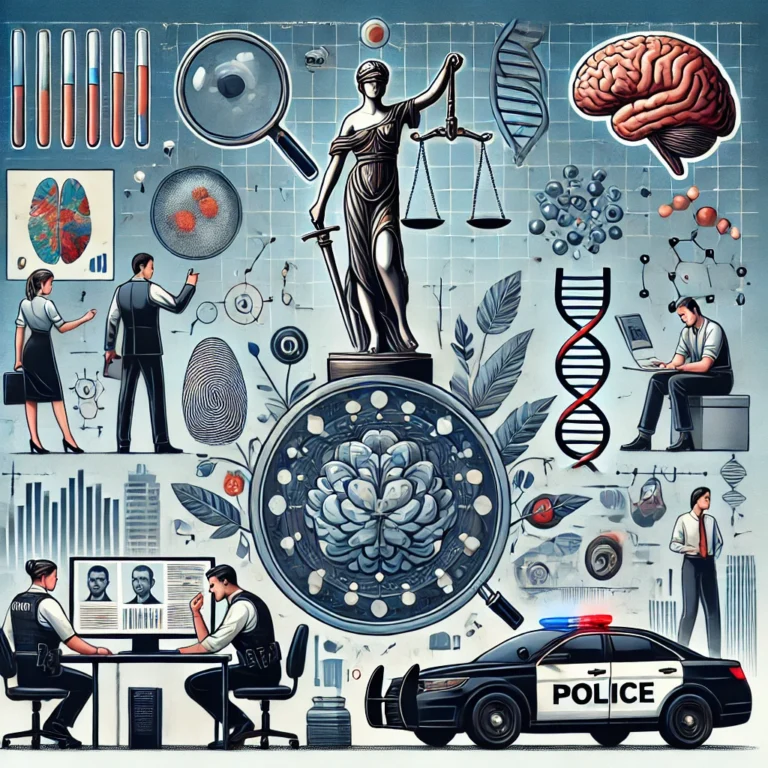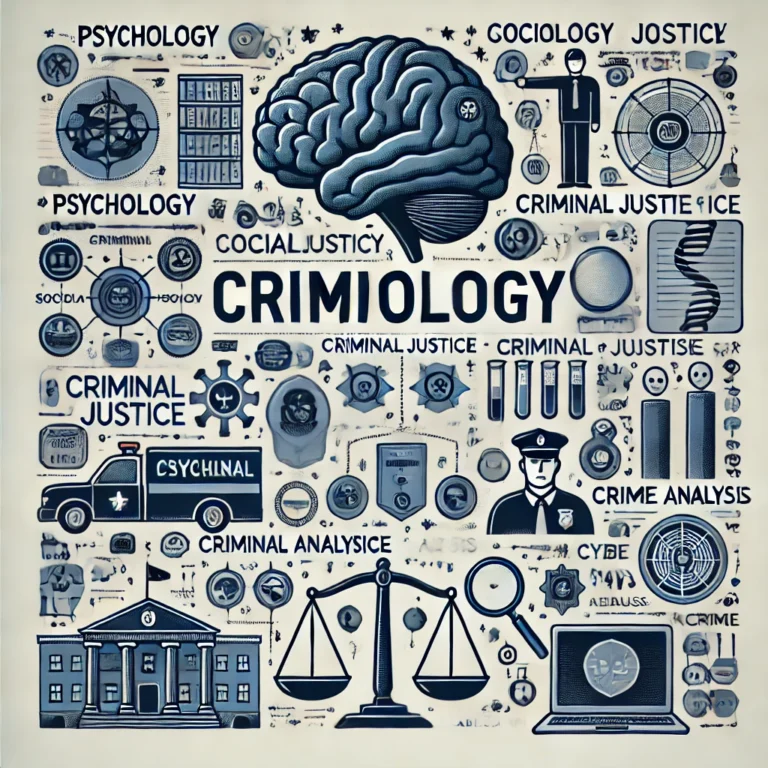Edwin Sutherland: Redefining Crime and Society Today
Who Was Edwin Sutherland
Edwin Sutherland stands as one of the most influential criminologists of the 20th century, fundamentally reshaping the study of crime through his groundbreaking work. His contributions to criminology, particularly his development of the Differential Association Theory, revolutionized the understanding of criminal behavior. By shifting the focus from biological and psychological explanations of crime to sociological influences, Edwin Sutherland provided a fresh perspective that remains relevant today. The impact of Edwin Sutherland’s work continues to influence criminological research, criminal justice policies, and academic discourse worldwide.
Early Life and Academic Background
Born in 1883 in Gibbon, Nebraska, Sutherland pursued his higher education at the University of Chicago, where he was exposed to the Chicago School of Sociology, a dominant force in shaping modern criminology. His intellectual journey was influenced by Robert E. Park, Ernest Burgess, and Albion Small, whose sociological insights helped mold his theories. Sutherland’s academic career saw him teaching at various universities, including the University of Illinois, University of Minnesota, and Indiana University, where he conducted much of his seminal research.
Edwin Sutherland’s theories have become essential in understanding the complexities of criminal behavior and societal responses to crime.
The Development of Differential Association Theory
Edwin Sutherland’s work on Differential Association Theory emphasizes how social environments shape an individual’s choices regarding crime.
One of Sutherland’s most groundbreaking contributions was his Differential Association Theory, introduced in his 1939 book, Principles of Criminology. This theory posits that criminal behavior is learned through interaction with others rather than being an inherent trait. The core principles of this theory include:
- Criminal behavior is learned, not inherited.
- Learning occurs through interaction with others in intimate personal groups.
- The learning process includes techniques of committing crimes and the specific motives, drives, and attitudes toward crime.
- A person becomes delinquent when their exposure to criminal definitions outweighs their exposure to non-criminal definitions.
- The process of learning criminal behavior follows the same principles as other forms of learning.
- Criminal behavior is not explained by general needs and values, as these needs exist among both criminals and non-criminals.
This sociological approach challenged previous theories that attributed criminality to biological determinism or psychological abnormalities. Sutherland’s insights shifted criminological discourse, emphasizing the importance of social environment and peer influences in shaping an individual’s propensity toward crime.

White-Collar Crime: A Revolutionary Concept
Sutherland also redefined the landscape of criminology by introducing the concept of white-collar crime in his book White Collar Crime (1949). Before Sutherland, criminologists focused primarily on street crime and violent offenses committed by lower-class individuals. However, he argued that corporate executives, politicians, and professionals also engage in significant criminal behavior—often causing more harm than conventional criminals.
He defined white-collar crime as “a crime committed by a person of respectability and high social status in the course of their occupation.” This concept brought attention to corporate fraud, embezzlement, tax evasion, and regulatory violations, highlighting that crime is not confined to lower socioeconomic groups. His research demonstrated that white-collar criminals often escape harsh punishment, revealing systemic biases in the criminal justice system.
This perspective laid the groundwork for recognizing the pivotal role of Edwin Sutherland in modern criminology.
Influence on Criminology and Criminal Justice Policies
Edwin Sutherland‘s work continues to have a profound impact on criminology and criminal justice policies. Some key areas influenced by Edwin Sutherland’s theories include:
Edwin Sutherland’s groundbreaking concept of white-collar crime has opened new avenues for understanding non-traditional criminal behavior.
Through his definition of white-collar crime, Edwin Sutherland highlighted the vulnerabilities of corporate structures to criminal abuses.
- Juvenile Delinquency Research: The Differential Association Theory has been widely used to explain how young individuals become involved in criminal activities through peer influence.
- Rehabilitation Programs: Sutherland’s work has influenced rehabilitation strategies that focus on social interventions, mentorship programs, and educational efforts to counteract criminal influences.
- Corporate Regulations and Legal Reforms: His research on white-collar crime has led to stronger corporate regulations and legal frameworks to prevent and punish corporate misconduct.
- Sociological Criminology: Many contemporary criminologists continue to build upon Sutherland’s sociological approach, integrating it with newer theories such as social learning theory and routine activity theory.
Criticism and Limitations of Sutherland’s Theories
While highly influential, Sutherland’s work has faced criticism. Some of the primary critiques include:
- Lack of Explanation for Individual Differences: The Differential Association Theory does not account for why some individuals exposed to criminal influences choose a lawful path while others embrace crime.
- Neglect of Psychological and Biological Factors: His theory largely dismisses the role of genetics and psychological disorders in criminal behavior.
- Challenges in Measuring “Definitions Favorable to Crime”: The subjective nature of determining how many “criminal definitions” a person is exposed to makes empirical testing difficult.
- Application to Modern Digital Crime: With the rise of cybercrime, organized digital fraud, and internet-based offenses, some argue that Sutherland’s theory needs modification to address new forms of learning in digital spaces.
Despite these criticisms, his work remains a cornerstone of criminological research and education.

Contemporary Relevance of Sutherland’s Work
Even in the 21st century, Sutherland’s theories remain highly relevant. The rapid expansion of social networks, online communities, and digital peer influences aligns with his Differential Association Theory. Cybercriminal networks often follow similar patterns of peer influence, learning processes, and gradual exposure to criminal techniques. Additionally, corporate crime scandals, such as the Enron scandal, Bernie Madoff’s Ponzi scheme, and financial fraud cases, underscore the ongoing significance of his white-collar crime research.
Conclusion
Edwin Sutherland’s contributions to criminology have left an indelible mark on the field. By challenging traditional views on criminal behavior, introducing the Differential Association Theory, and pioneering research on white-collar crime, he transformed the way crime is studied and understood. His work laid the foundation for modern criminological theories and policies, influencing not only academics but also legal systems and crime prevention strategies. As society continues to evolve, Sutherland’s insights will remain a guiding force in the study and prevention of crime, proving that his legacy is as relevant today as it was decades ago.
Edwin Sutherland’s insights remain crucial as they inform ongoing discussions about crime prevention and social justice.
As we analyze modern crime trends, understanding Edwin Sutherland’s contributions becomes increasingly vital.
Edwin Sutherland’s legacy will continue to shape discussions in criminology for generations to come.






